Nuke 12.1 Release notes
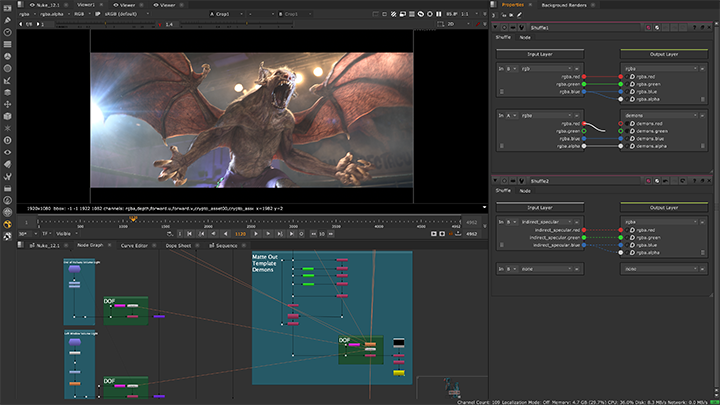
New Shuffle Node
Introducing a new, updated version of the Shuffle node which will replace both the Shuffle and ShuffleCopy nodes. With a more user-friendly UI, the updated node improves stability and offers consistent channel ordering relative to the previous Shuffle node. Plus, it can now support one or two inputs and up to eight channels per layer.
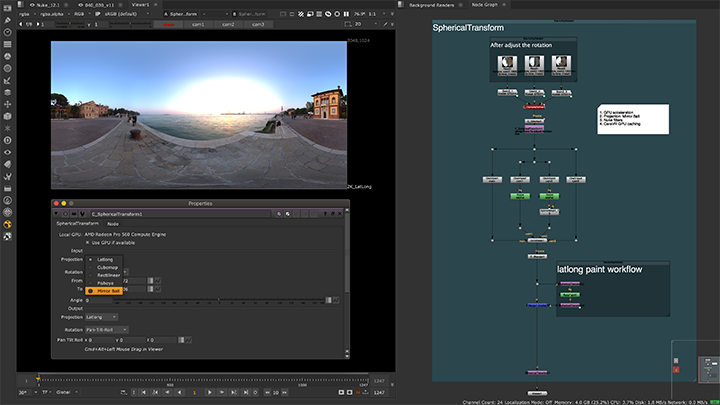
Updated Nuke Spherical Transform and Bilateral
We’ve merged the NukeX and Cara VR versions of SphericalTransform and Bilateral with the Nuke versions of these nodes, adding increased functionality and GPU support in Nuke. SphericalTransform has a new MirrorBall projection method, alongside access to the standard set of Nuke filter methods. Both nodes take advantage of the CaraVR GPU performance improvements added in Nuke 12.1 and are available in Nuke—they do not require a NukeX license.

Cara VR GPU Caching
Improvements to Nuke’s GPU processing architecture result in significant performance improvements for chains of nodes that use this new behavior. In Nuke 12.1, all of the Cara VR nodes, including SphericalTransform and Bilateral, take advantage of this architecture resulting in significant improvements in viewer processing and rendering. This improvement is also available in BlinkScript.

New BlinkScript Particle Support
NukeX now includes a new ParticleBlinkScript node. This node allows users to write BlinkScripts which operate on particles and further enables users to write their own custom Particle nodes. We’re also providing 14 new gizmos as a starting point for artists and developers using ParticleBlinkScript to create new particle tools.
To facilitate these updates, we’ve made some updates and fixes to Nuke’s BlinkScript framework to improve performance for GPU-accelerated nodes and help developers working with BlinkScript, including a new debug printout. See the release notes and developer documentation for details.

Lens Distortion Workflow Improvements
We’ve revamped the NukeX LensDistortion node to offer a more intuitive experience and provide all the features you need right at your fingertips. The main tab has been refined to make it your first stop for setting up the distortion models. It’s also been updated with new features and user experience improvements, like setting the default output mode to undistort rather than STMap. The second tab has now been updated to 'Analysis', offering all controls for both the grid detection and line drawing workflows you’re used to. Plus, the advanced tab now offers even greater control for fine-tuning your distortion model or work with fisheye data.
Grid Warp Tracker Improvements
The NukeX Grid Warp Tracker introduced in Nuke 12.0 has several improvements to help you control and move your data where you need to in a script. We’ve introduced new export options, allowing users to export tracking data from the GripWarpTracker node to a Tracker (baked), a Tracker (linked) or a Transform node. Plus, users can export tracking data from the entire grid, a selection of grid points or just a single grid point to help pinpoint the exact tracking data needed.
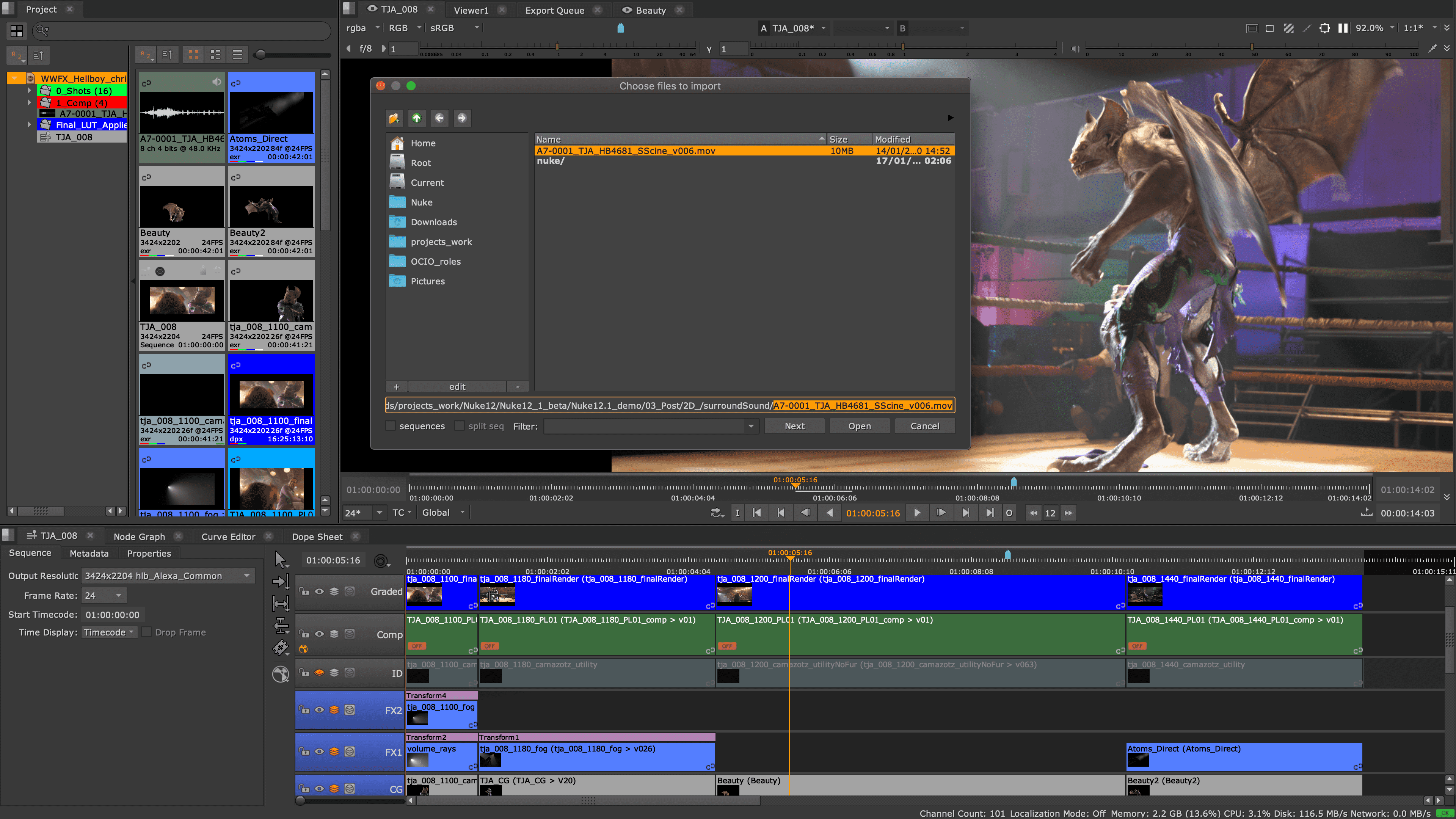
QuickTime Audio MultiOS & Surround Sound Support
We’re expanding native support of .mov containers holding audio to Linux and Windows. You can now import these directly into Nuke Studio, Hiero and HieroPlayer without the need to extract and import the audio as a separate Wav file. Alongside this, we’ve introduced multichannel audio support for Nuke Studio, Hiero and HieroPlayer. Multichannel audio patching has been added to the timeline, and the audio output can be set up using monitor out devices of specific audio cards.

Bin and Track Item Version Linking
A new behavior links source clip versions between a project bin item and its corresponding track items. Now, changing the version of a clip on the project bin, or on a sequence, will change all other instances of the same clip that exist in the same sequence or in any other sequences. This streamlines the process of updating sequences, for example when propagating changes across 10, 30, and 60-second cuts of a project. Version linking is set to ‘On’ by default and can be set manually in the timeline, project bin, and Preferences.

HieroPlayer Artist Review and Flipbook in Nuke
New instances of HieroPlayer will now launch faster, improving artists’ overall experience when using HieroPlayer as a flipbook tool. We’ve been able to increase launch speeds for new instances of HieroPlayer on Windows and macOS by a factor of 1.2x and on Linux, we’re seeing an increase of up to 1.5x in our internal tests.
Nuke 12.1 includes the ability to use HieroPlayer as a flipbook tool for Nuke and NukeX, giving artists more control when comparing different versions of their work. HieroPlayer will auto-detect the OCIO config and viewer colorspace coming from the Nuke script and set up the files being reviewed correctly, whether you are working on a single script or in multiple scripts at one given time. HieroPlayer can be set as the Flipbook in the UI and in the Preferences.
Infrastructure and Standards
High DPI Windows and Linux
This release adds support for UI scaling when using high-resolution monitors on Windows and Linux. This brings all platforms inline (with high-resolution display support added for macOS in Nuke 12.0v1).
ARRI Updates
Nuke 12.1 includes several updates and extensions to support for ARRI cameras including ArriRAW SDK version 6.2.1.0, GPU debayering feature via CUDA, Codex HDE .arx Arri RAW, Arri Alexa Mini LF support and ProRes wrapped MXFs from the Alexa Mini LF (ARRIRAW/MXF).
QuickTime and MXF Improvements
Nuke 12.1 includes several updates to supported codecs, improving user experience when working with these file types.
Building on the work to add support for DNxHR MXFs in Nuke 12.0, in this release Nuke now supports reading of DNxHR .movs and writing of DNxHR MXFs.
When reading .mov and .mxf ProRes files you can now use metadata to set colorspace in Nuke. You can also parse the frame header to get transfer characteristics if not found in file metadata of MXF or MOV files—this change will have an impact on scripts loaded from older versions of Nuke. Support for Motion JPEG B, encoded QuickTime, has been added to the mov64 Reader in Nuke and Nuke Studio and mov64 Writer in Nuke. This re-enables support for this codec on macOS Catalina and introduces support on Windows.
Nuke 12.0 Release notes

Soft Selection
The Soft Selection feature extends how you can interact with geometry and cards in the 3D viewer. Soft Selection gives you a customizable falloff to your geometry vertex, face, or edge selection. Combined with Nuke 11.3’s lasso selection mode, this feature makes modifying geometry for projection setups, last minute adjustments, or any number of 3D workflows more streamlined.

Edge Extend Node
Discover Edge Extend, one of our new GPU accelerated nodes for common compositing tasks. Edge Extend speeds up artist’s everyday workflows, allowing you to erode or dilate your sample region to pull pixels from deeper inside your alpha. As well as giving you the ability to recover the original detail and noise with no introduction of artifacts.

Inpaint Node
Introducing Inpaint, the second of our new GPU accelerated nodes. Our Inpaint node gives you the ability to create contextual paint strokes similar to Photoshop’s Healing Brush, whilst controlling the level of detail, or pulling this detail from another part of the source image, or a second image entirely.
Grid Warp Tracker
The Grid Warp Tracker helps create match moves, track warps and morphs, as well as allowing you to warp across custom defined grid shapes and use Smart Vectors to drive the grids. The 'To and From' grid workflow enables you to add and copy tracking data between grids, allowing you to retest or make amendments without losing your original data, or having to create a backup version. Exclusively in NukeX, you can use Smart Vectors to drive the grids or set multiple grids for finer adjustments.

Cara VR Node Integration in NukeX
The majority of Cara VR’s nodes are now integrated into NukeX. This includes a suite of GPU enabled tools for VR and stereo workflows, as well as enhancing traditional camera solving and clean up workflows. Multiple camera setups become easier to manage with Cara VR’s Camera Solver, allowing artists to easily toggle between custom camera setups and solve, to generate a single image. The CameraIngest nodes allows you to easily import cameras from CG or other packages, to use with the Camera Solver. As part of this merge, VR Headset support will be available across the Nuke family, including in Nuke, Nuke Studio, and Hiero.
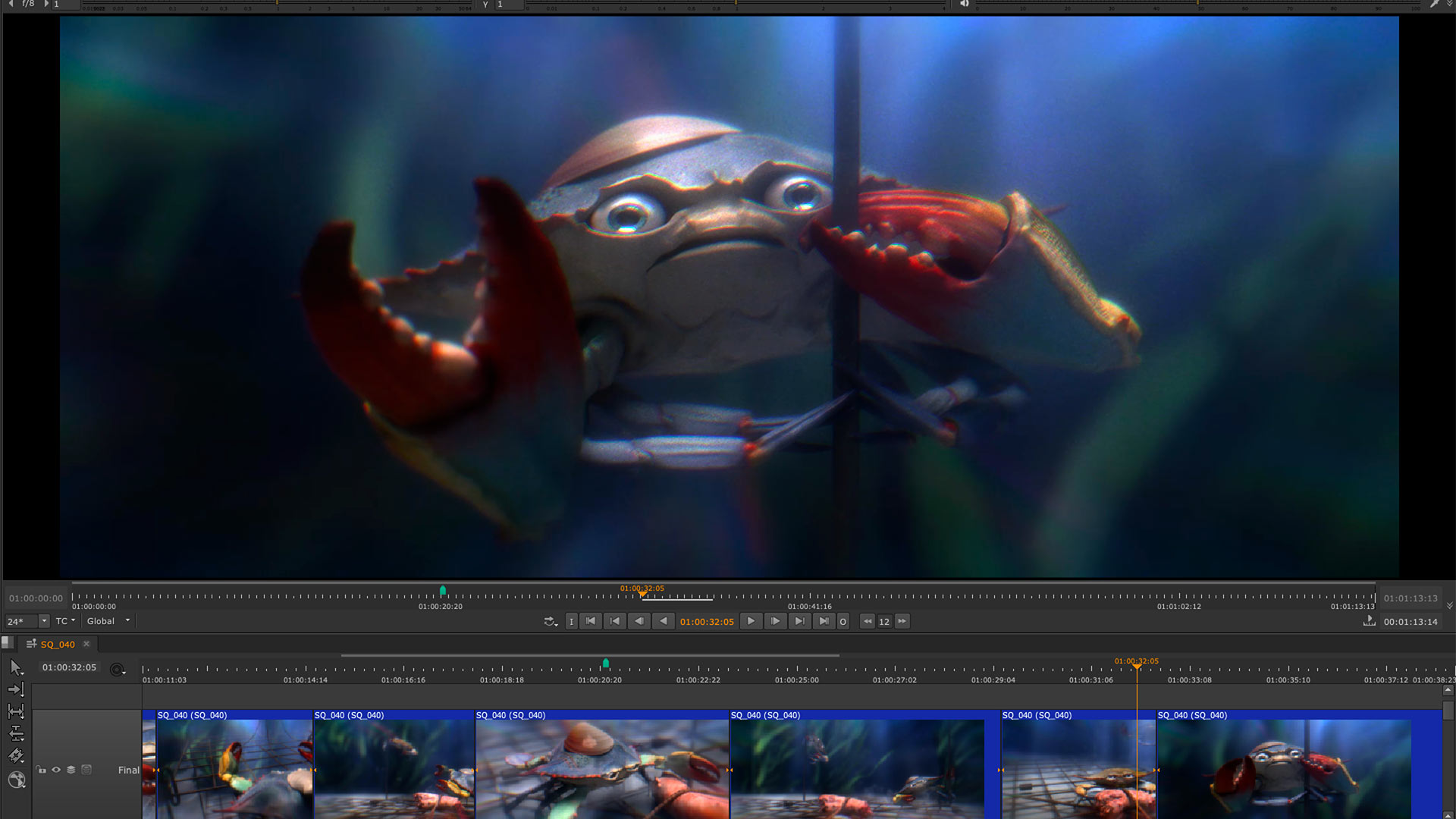
Nuke Studio, Hiero & HieroPlayer Playback Performance
This release includes much more stable playback across the timeline-based tools in the Nuke family. The update comes as a result of new timing and control logic in the playback engine, optimized for the heavy I/O demands of color managed workflows with multichannel EXRs, especially at higher resolutions and frame rates.
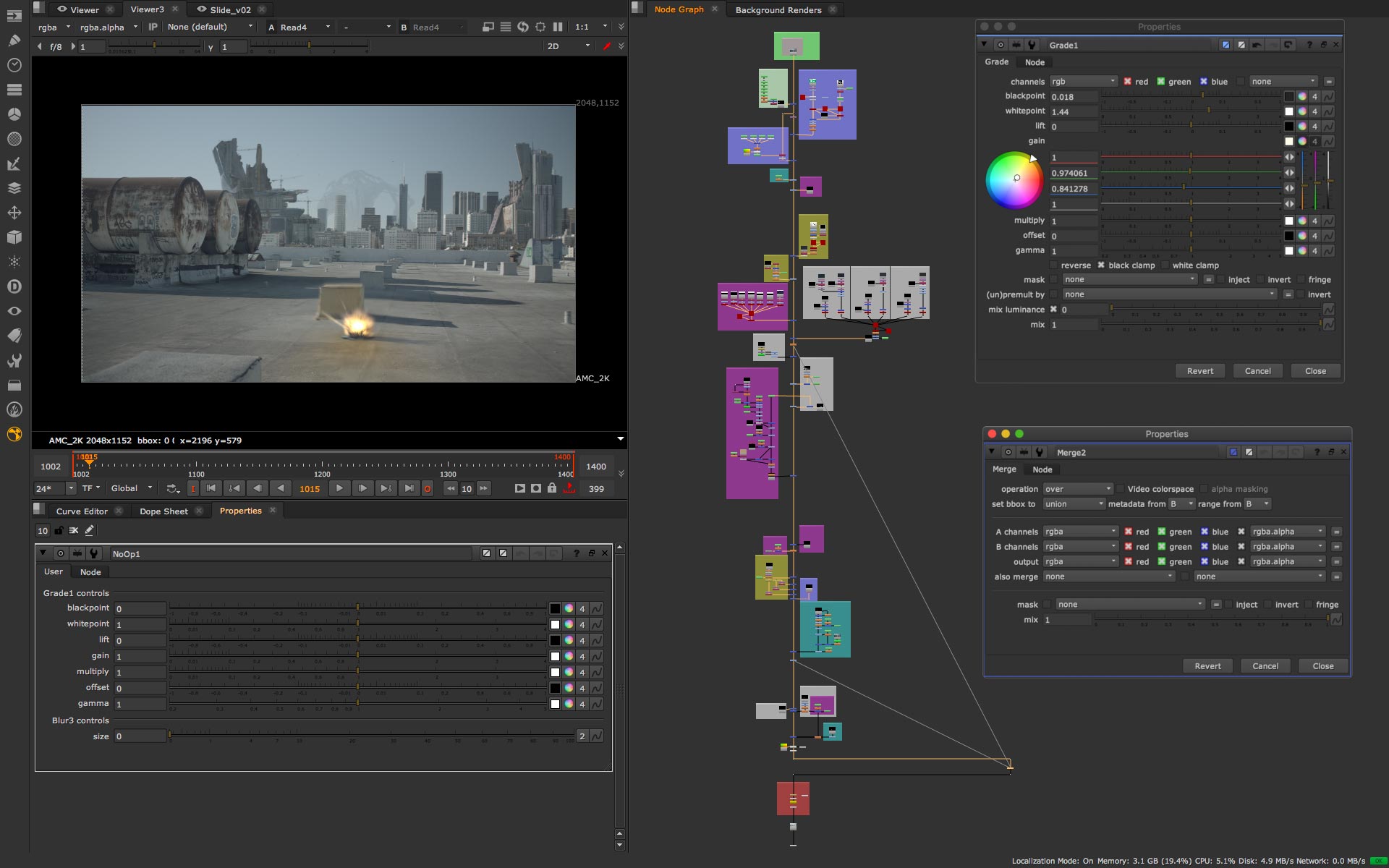
Interactive Performance
Nuke 12.0 ships with a variety of optimizations, throughout the software, to improve performance, especially when working at scale. One key improvement offers a much smoother experience when working on large projects and noticeably maintains UI interactivity when working in scripts with over 1,000 nodes. This benefit extends to scripts with many nodes encapsulated in Groups and Live Groups and also results in faster loading of large scripts.
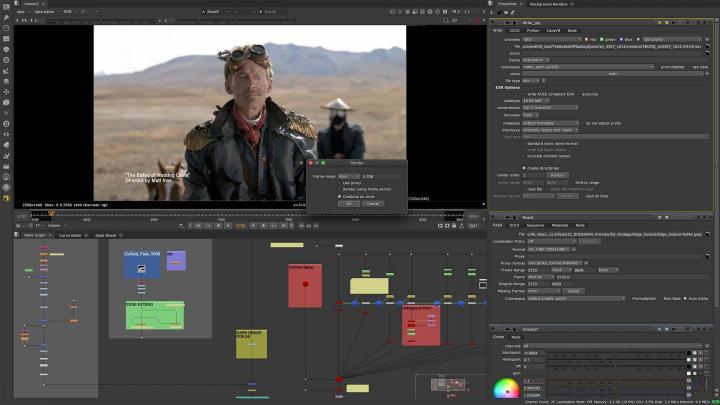
EXR Read and Write Performance
We’ve optimized performance of both reading and writing of EXRs. Some of the biggest improvements are seen when using planar-based compression types, such as PIZ, Zip16, DWAA and DWAB, allowing for faster reading of files, whether locally from disk or off a network. Reading in data can be a major performance bottleneck, improving read speeds adds to interactive performance and reduces processing time when rendering scripts.
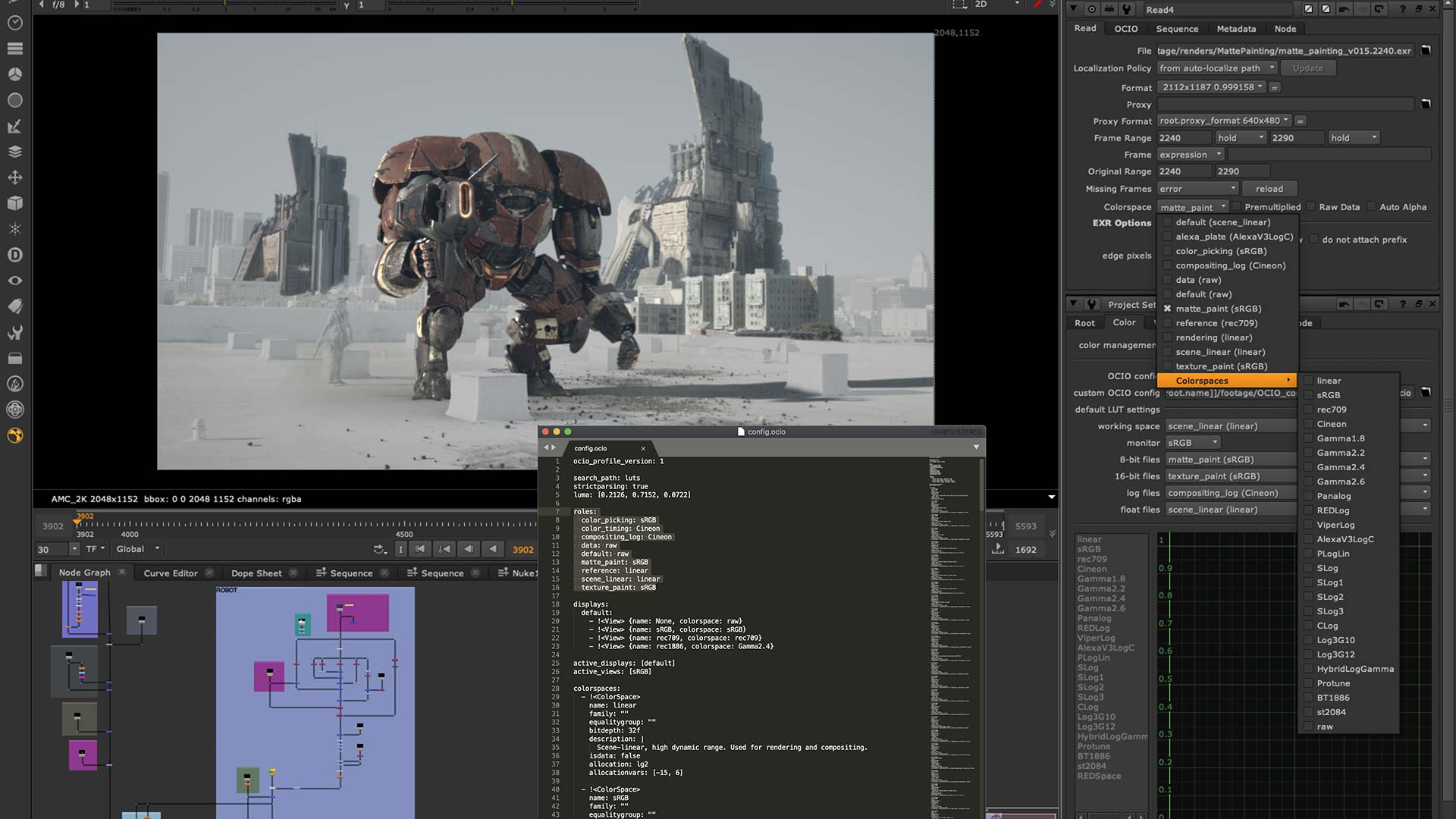
OCIO Role Support
The Nuke family now supports OCIO roles, which allows you to set custom role names as an alias for a specific colorspace, making it easier for artists to know which LUT to use and to share scripts between projects or facilities. You still get access to all the colorspace options you always have, but now the roles can act as a quick way to understand the color workflow of a given show. We’ve also improved error handling, so when artists are switching between shows, there isn’t any mishandling of which roles or LUTs are available or should be used.
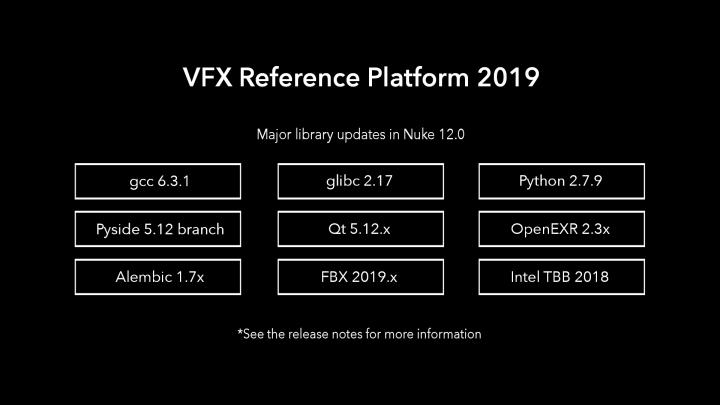
Industry Standards and File Format Updates
Nuke 12.0 supports VFX Reference Platform 2019, which sees Nuke using the latest versions of Qt and OpenEXR. The RED SDK has been upgraded to version 7.1, including support for CUDA-based GPU decoding of RED files in Nuke and NukeX. Sony SDK version 3.3 adds support for v4 of the VENICE camera and X-OCN XT files. SDKs for BlackMagic and AJA monitor out cards have also been upgraded to the latest major versions. Additionally, the Nuke family now supports reading of DNxHR encoded .mxf files. See the Tech specs and release notes for full details of updated format, GPU and operating system support.